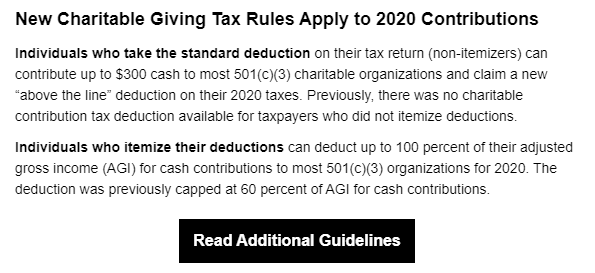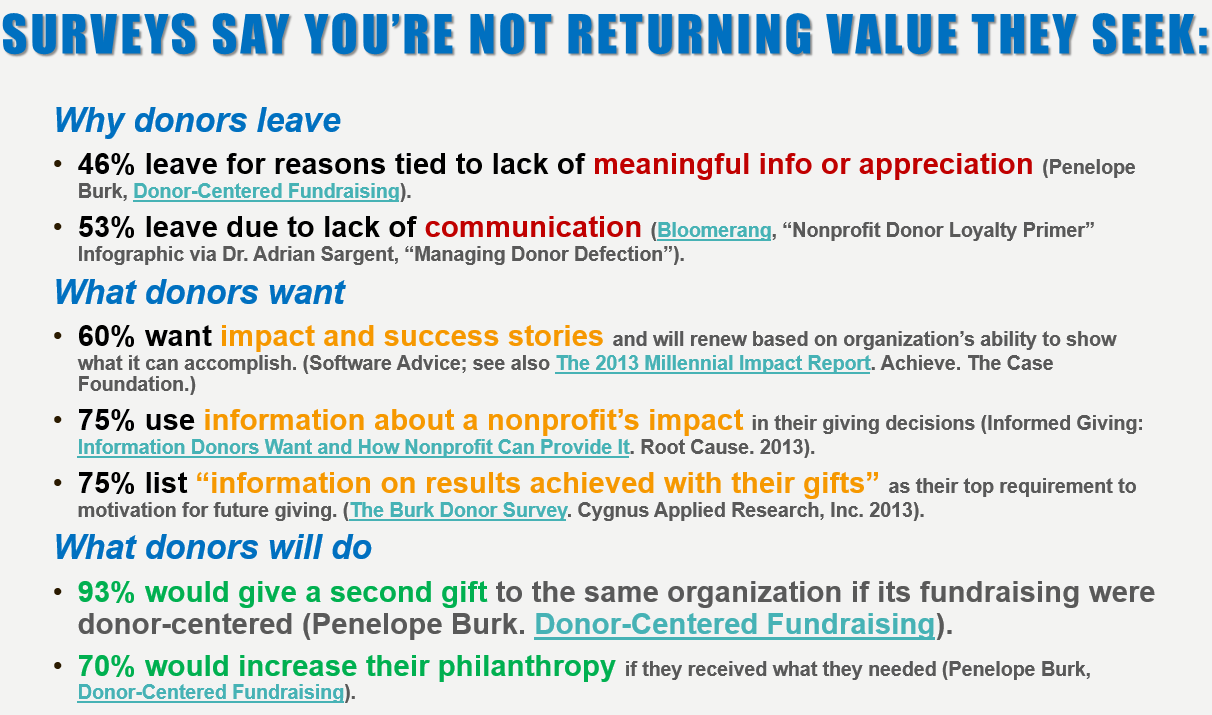TIP #1: How to Message During this Uncertain Time
Whether it’s a marketing or fundraising communication, keep these four basics in mind.
- Clarity and confidence.Get clarity on your reason (WHY) for sending this particular message; then assure your message is a confident expression (WHAT) of your rationale. Make these two characteristics part of every message you create. And don’t muddy the waters. Each message has a singular overarching goal. If may be information, a solution to a problem, or even an escape. Highlight what it is and why it matters in all your communication channels.
- Steadiness. Although this crisis isn’t going away soon, neither are you. Steady, calm, and measured language will help constituents understand you’re there for them — now and in the future. This does not mean gas lighting or ignoring the elephant in the room, however. If you steadily obfuscate, or offer platitudes, you’re not offering clarity. Nor are you getting across the message your stability depends upon you and your community coming together.
- Urgency. There’s a lot of fundraising noise; you must cut through it. While keeping calm, highlight the urgency of a donation in clear terms. What will a gift accomplish? What will happen if you don’t meet your goal? Help the donor visualize precisely how their gift will make an impact. And, of course, have a plan in place to report back to donors who respond to your call to action so they can trust their gifts were put to work as intended.
- Normalcy. As you create and promote content, keep in mind many people are looking for temporary escape. You do need to acknowledge the crisis to be credible, yet not everything you say needs to be about it. Find something about what you do that feels like what you’ve always done, more or less. Continue to showcase the parts of your mission people have always cared about and supported, even though some of the ways you’re implementing programs and services may be evolving.
TIP #2: Be the Bearer of Good News by Communicating New Tax Benefits to Your Supporters
What donors don’t know, they won’t take advantage of – and that will be to everyone’s detriment.
I recently received a fundraising email from the Fine Arts Museums of San Francisco. At the bottom, I was pleased to see them include information informing supporters about new tax deduction benefits made possible through the CARES Act.

I wrote about these new giving incentives here. You can also grab all the details in the “Read Additional Guidelines” link which goes to the AFP website.
IMPORTANT NOTE: I always recommend you let donors know you are not in the business of offering professional legal or financial advice, and they should consult with their own advisors.
TIP #3: Use this Time to Conduct a Brief Donor Survey
Donor surveys offer you a “twofer.”
- One is for you (useful information).
- One is for your donor (a way to usefully participate other than giving money).
People want to be helpful right now, so they just may participate in larger numbers than would have been true in the past. It’s a way to connect without asking for money (you always want a balance of communication strategies), and this makes sure you don’t fall ‘out of sight’ (which can become ‘out of mind’ all too quickly.)This information can be gold to you as you prepare your content calendar and campaign materials moving forward.[See 2 Reasons Donor Surveys are Valuable].
Surveying donors does not have to be a complex process (Survey Monkey and Googledocs both have free versions) — and once you get the hang of it, your fundraising materials will practically write themselves!
Find out what it is about your organization your donors like most.
- What programs are their favorites?
- What issues that you address do they believe are most pressing right now?
- What one adjective best describes your organization to them?
- Which of your publications are their favorite?
- What one thing you accomplished last year do they feel was most important?
Find out what else informs your donor’s giving decisions.
- What issues in your community are most pressing right now?
- What issues in the world do they care most about addressing right now?
- What’s their favorite social media channel?
- Where do they get their news?
- What other charities do they support?
How does this work?
Surveys facilitate your transition from “organization-centric” to “donor-centric” communications.
After surveying your supporters you’ll know what your donors want you to tell them (vs. what you want to tell them).This is a huge deal!
In survey after survey, donors are telling us we aren’t doing an effective job communicating with them.

Penelope Burk nailed this when she said, years ago, in her ground-breaking “Donor-Centered Fundraising” book: “Show me that you know me.”
TIP #4: Time to Do Spring Database Clean-up!
This is a good time to prepare your list for your upcoming fall campaign.
Did you know 10% of all U.S. nonprofit mail appeals won’t even be delivered?
That’s because nearly 45 million Americans move each year, and for many their mail is undeliverable because of incorrect addresses. Yipes!
Use services such as the National Change of Address (NCOA) at least once a year to keep up with current home addresses. This can save you a significant amount money as addresses change frequently due to moves, divorces and deaths. There’s a new tool called TrueNCOA that will process any file for $20 using the NCOA records of the US Postal Service. They’ll also do address verification and eliminate duplicates — all for the single fee.
TIP #5: Hold a Thankathon before you next solicit your donors
You honestly can’t thank folks enough.
Your donors deserve it!
Ordinarily I advocate bringing staff, board members, other volunteers and even clients together in a central space for a funThankathon event (with food, decorations, prizes and the like). Today you’ll want to farm out the calls, but maybe you can designate a particular day or several days in which everyone agrees to make pure thank you calls. You can get creative with the accoutrement. Maybe send volunteer callers coupons good for a slice of delivered pizza. Or simply send them all some gold or heart stickers in advance, suggesting they paste them on their computers to remind themselves what super star heroes they are for taking on this important job.
Also send script templates so folks feel comfortable calling donors and thanking them for everything (gifts, advocacy, ambassadorship, direct service) they have done to help. These calls should make donors feel really good about their affiliation with you.
This is well worth your time and effort! It gets board and staff comfortable talking with donors. It predisposes those called to make another gift next time they are asked.
Plus it’s a great opportunity to connect, and get some feedback.
If folks are willing to chat, take this opportunity to learn a bit about how they got connected with you, and see if there are other ways they’d like to become involved.
Gratitude is most effective when it’s repeated (per research by Dr. Martin Seligman). So don’t let the fact that your donor has received an emailed or mailed thank you stop you from connecting more personally.
Don’t thank donors for helping your organization be successful. Instead thank them for the impact THEY are making.
Take the time to appreciate your donors BEFORE you send another solicitation. Then they are much more likely to keep your organization on their short list of favored causes.
Grab this Bonus!
A colleague adapted this Email Checklist from some of my work. I liked it so much, I asked if I could share it with you. Use it in good health.
And don’t forget to check your dashboard from time to time to see if new bonuses have been added.